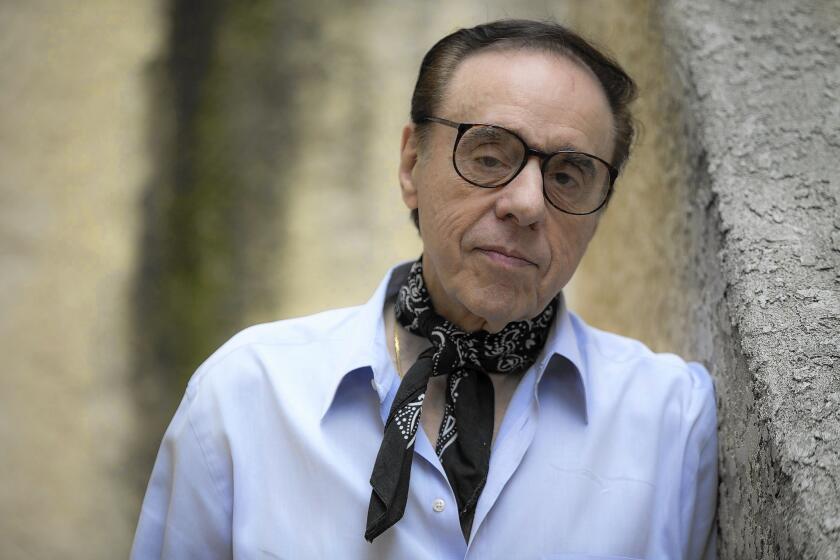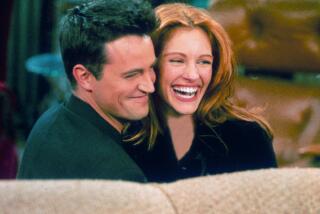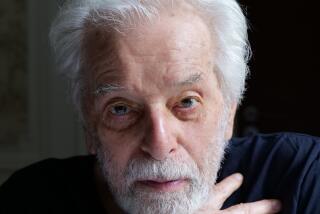Peter Bogdanovich, director of ’70s classics such as ‘Last Picture Show,’ dies at 82
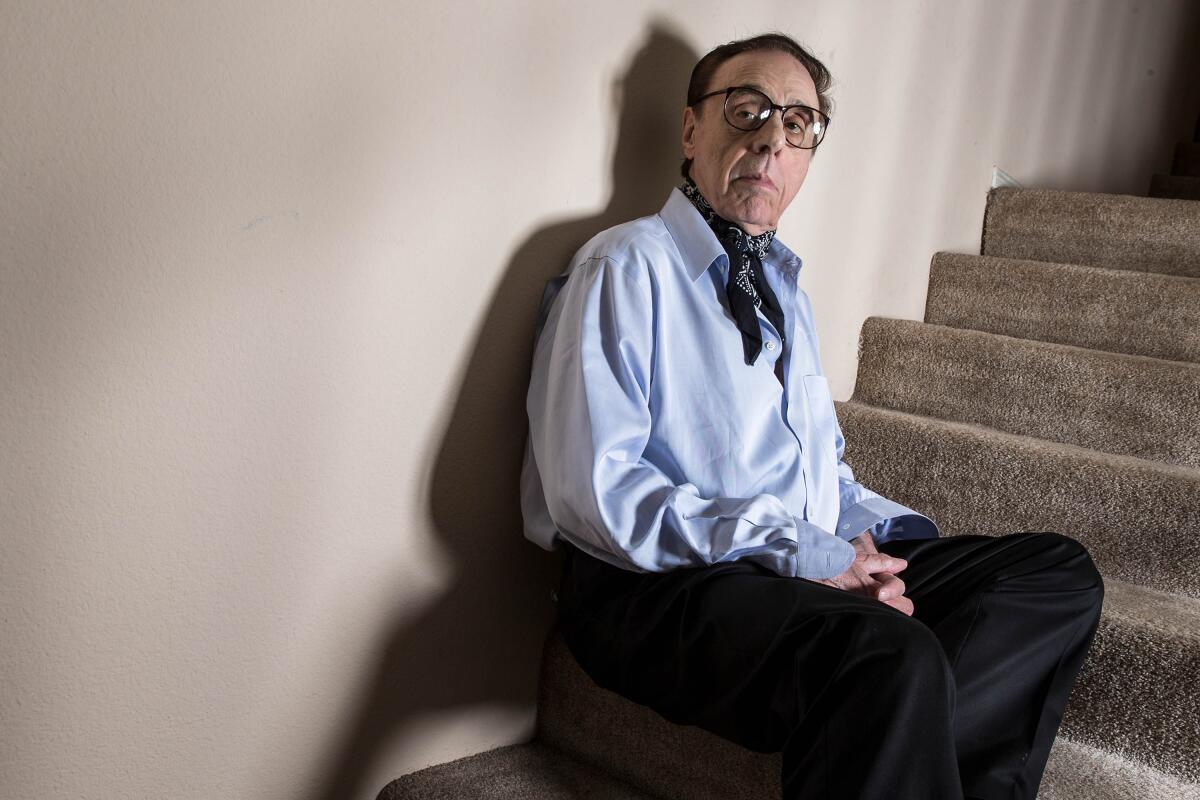
By the mid-1970s, Peter Bogdanovich was riding high in Hollywood with a string of critically acclaimed films and living in an estate with Cybill Shepherd, whom he’d nurtured to stardom in “The Last Picture Show.”
By the next decade, it was all gone. His new films largely flopped and his personal life was in tatters — upended by the slaying of Dorothy Stratten, his Playboy playmate-turned actress girlfriend, and then ostracized when he married her younger sister. Broke, he declared bankruptcy and slumped out of Bel-Air.
But Hollywood loves second acts and Bogdanovich had his later in life with a run of well-received films, a pair of acclaimed books and a reoccurring role on ”The Sopranos” as Elliot Kupferberg, the therapist for Tony Soprano’s overworked psychiatrist.
“It’s been a very up-and-down existence,” he told The Times on the eve of the release of “She’s Funny That Way,” his final feature film.
Revered as the director of touchstone 1970s movies such as “The Last Picture Show,” “What’s Up, Doc?” and “Paper Moon,” Bogdanovich died Thursday at his Los Angeles home at age 82. Oren Segal, the two-time Oscar nominee’s manager, confirmed Bogdanovich’s death from natural causes.
“Movies used to be something powerful,” Bogdanovich told The Times in 2015. “It’s been a bit ruined now. I don’t know if we can get it back — I think we can. But it’s lost its innocence. The interesting stuff has moved to TV, and movies have become more like, ‘What can I blow up next?’ There’s a terrible cancer at the heart of that.”
“The Last Picture Show” earned two 1972 Oscar nods for Bogdanovich, for director and for writing of a screenplay based on another medium, which he shared with author Larry McMurtry. The film also earned two trophies — supporting actor and actress — for Ben Johnson and Cloris Leachman, respectively, plus an additional four nods. Among them was a best-picture nomination.
Peter Bogdanovich has countless stories, and he tells them with the sort of flair you’d expect from a man who wears a neck scarf.
“My heart is broken — my dear friend Peter is no longer with us in the physical form,” actor Jeff Bridges, who starred in “The Last Picture Show” and “Texasville,” wrote Thursday on social media. “I loved him and will miss him. What a wonderful artist. He’s left us with the gift of his incredible films and his insights on the filmmakers he so admired. I love you Peter.”
“Peter always made me laugh!,” Barbra Streisand, star of “What’s Up, Doc?,” wrote Thursday. “He’ll keep making them laugh up there too. May he rest in peace.”
Born in Kingston, N.Y., on July 30, 1939, Bogdanovich grew up as the son of immigrant parents from Austria and Serbia. Throughout his childhood, he would see hundreds of movies a year, studiously recording his opinions of each one on a note card. At age 15, he began acting professionally in summer theater, and at age 20, he directed his first off-Broadway play.
He began his career in the motion picture business programming films for New York’s Museum of Modern Art and writing about movies for Esquire before moving to Los Angeles in the late 1960s with his first wife, Polly Platt, and breaking into the industry for real.
Former Times staff writer Patrick Goldstein noted in a 2004 story that Bogdanovich would frequent the Whisky-A-Go-Go in the mid-’60s, when the place was so hip he would see beatniks and surfer girls at one end of the crowded room and Shelley Winters, Sal Mineo and Dean Martin at the other.
Bogdanovich, who was writing at the time, would hang out at directors’ houses. John Ford and Howard Hawks let him visit their sets, where he soaked up invaluable directing tips. Jerry Lewis got so tired of seeing Bogdanovich’s old beater car that he gave him a new Ford Mustang.
He let his acting career slide for a while, telling The Times in 2013, when he was teaching at the University of North Carolina School of the Arts: “I like acting. I regret that I didn’t continue acting as part of my career for many years. I just let it go, and I regret that. I would have had more clout.”
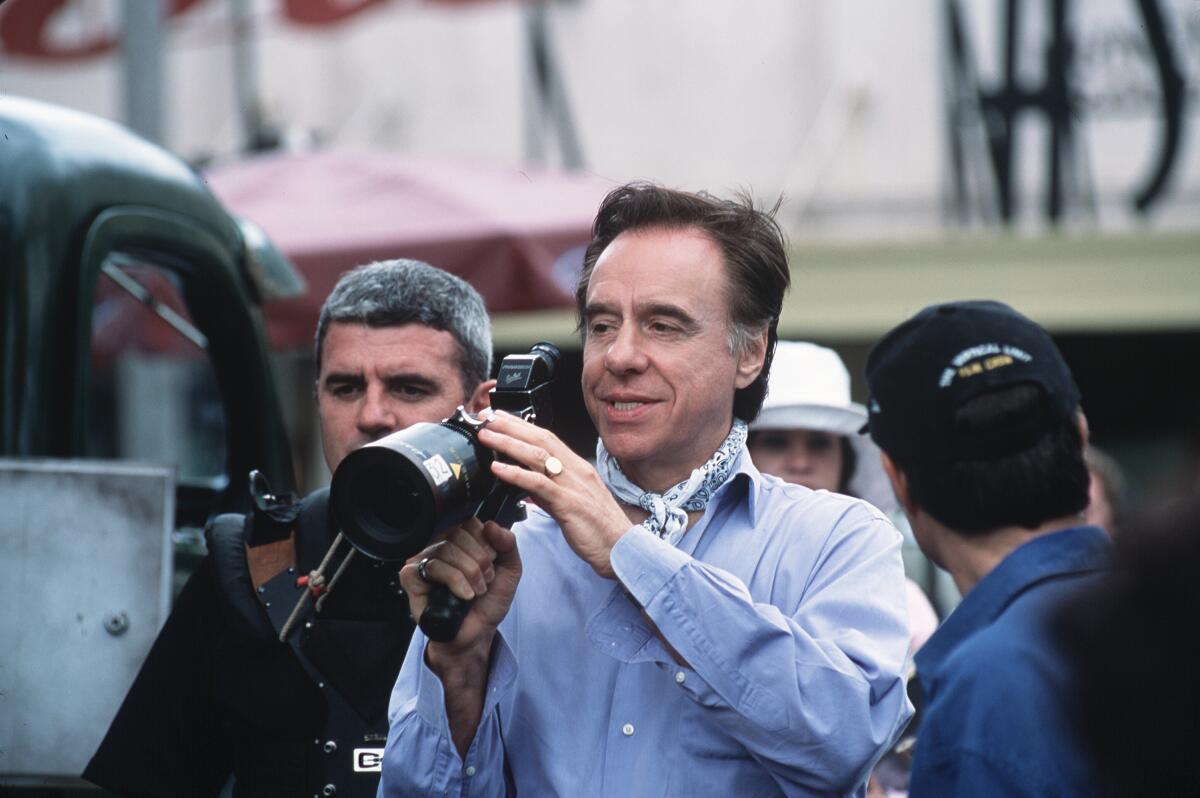
After rocketing to fame in the ‘70s with “The Last Picture Show,” “What’s Up, Doc?” and “Paper Moon” — all of which were steeped in an adoration for Hollywood’s past — Bogdanovich saw his career plummet later that decade after a string of bruising flops.
Martin Scorsese noted in a statement to the Associated Press that Bogdanovich was “right there at the crossroads of the Old Hollywood and the New.”
“Like many of us, he made his way into directing pictures by way of Roger Corman, and he and Francis Coppola broke into the system early on: Peter’s debut, ‘Targets,’ is still one of his very best films,” Scorsese continued Thursday. “With ‘The Last Picture Show,’ he made a movie that seemed to look backward and forward at the same time.”
Bogdanovich’s marriage to Platt had fallen apart while filming “The Last Picture Show,” when he left his wife, the movie’s production designer, for its star, a then-21-year-old Shepherd. But he and Platt continued to work together, finalizing their divorce in 1973.
NO LAUGHING MATTER--Director Peter Bogdanovich isn’t laughing about the $4 million he reportedly forked over to share in distribution rights to “They All Laughed” from Time Inc.
He and Shepherd would stay an item through the late 1970s, and he cast her in the movies “Daisy Miller” and “At Long Last Love.” But they split after he cheated on her while filming “Saint Jack,” starring Ben Gazzara.
The director took up next with Stratten, who was later featured in his 1981 film, “They All Laughed,” a rom-com that starred Gazzara, Audrey Hepburn and John Ritter. Tragedy struck shortly after filming wrapped, when Stratten was killed by her estranged husband.
The tough streak continued. Bogdanovich had financed distribution — reportedly forking over $4 million for the rights — of “They All Laughed” and blamed that when he had to declare bankruptcy in 1985 and was pushed out of his Bel-Air estate. He then faced public scandal in late 1988 when he married Stratten’s younger sister, Louise, who was 29 years his junior.
Acting opportunities came up during the 1970s and ‘80s, but he turned down major film roles, including featured parts in Samuel Fuller’s “The Big Red One” and Sydney Pollack’s “Electric Horseman” and “Tootsie.” Ultimately, he would rack up almost 60 acting credits, including his recurring on “The Sopranos.”
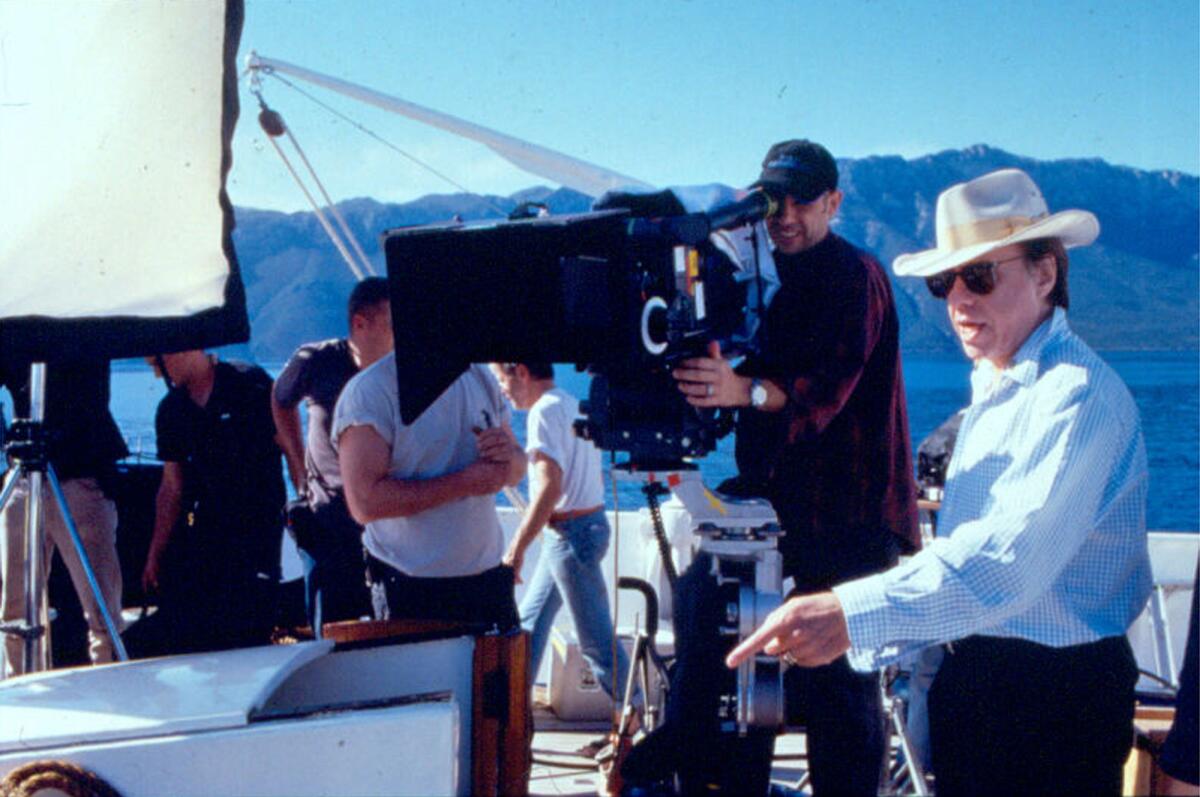
Bogdanovich filed for bankruptcy a second time in 1997, less than 24 hours after a Los Angeles Superior Court jury socked him with a $4.2-million verdict in a real-estate dispute.
At the time, he was also promoting “Who the Devil Made It,” a book compilation of interviews with famous directors. It was one of more than a dozen titles he had to his name, which also included 1992’s “This Is Orson Welles.”
“He was a dear friend and a champion of Cinema. He birthed masterpieces as a director and was a most genial human. He single-handedly interviewed and enshrined the lives and work of more classic filmmakers than almost anyone else in his generation,” director Guillermo del Toro wrote Thursday on social media.
A few years after directing Cher and Eric Stoltz in “Mask,” Bogdanovich released his “Last Picture Show” sequel, “Texasville,” in 1990, having brought back Shepherd, Bridges and all the surviving members of the original film. “Noises Off...” followed in 1992, then “The Thing Called Love” in 1993.
He moved back to New York City in 1997, but ultimately returned to the West Coast. And he spent the balance of the 1990s toiling in television before returning to the big screen in 2001 with the indie film “The Cat’s Meow.”
“Deeply saddened to hear of the passing of one of my oldest friends, legendary director & film historian, Peter Bogdanovich,” “Cat’s Meow” actor Cary Elwes said on social media. “Besides being extraordinarily talented, he was a gentle soul with an enormous heart.”
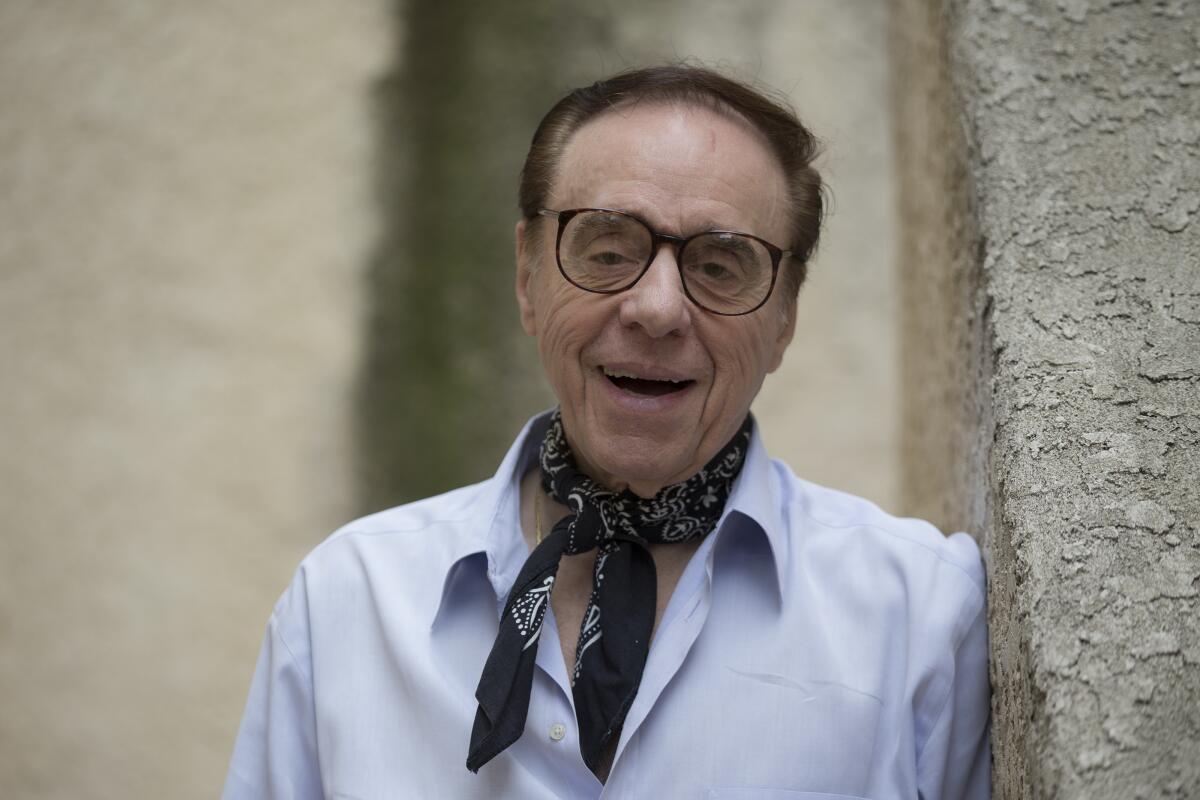
Still, Bogdanovich would never return to the Hollywood-royalty peak of fame he’d achieved with his trio of early films in the 1970s.
Bogdanovich was behind the camera well into his 70s. He released the disappointing “She’s Funny That Way” in 2015 — a project he started writing with Louise Stratten in 2000, a year before they divorced — and also continued to act in projects including “It: Chapter Two” and the TV series “Get Shorty.”
“The maestro has left us,” tweeted Illeana Douglas, who starred in “She’s Funny That Way” with Imogen Poots. “A great director, a great actor, our greatest film historian. His writings and interviews with Hollywood legends pragmatically defined motion pictures as Americas greatest art form. Peter Bogdanovich was our last tie to a golden era of cinema.”
The filmmaker is survived by two daughters, Sashy and Antonia, from his marriage to Platt.
Times staff writer Josh Rottenberg and former staff writer Patrick Goldstein contributed to this report.
More to Read
Only good movies
Get the Indie Focus newsletter, Mark Olsen's weekly guide to the world of cinema.
You may occasionally receive promotional content from the Los Angeles Times.
